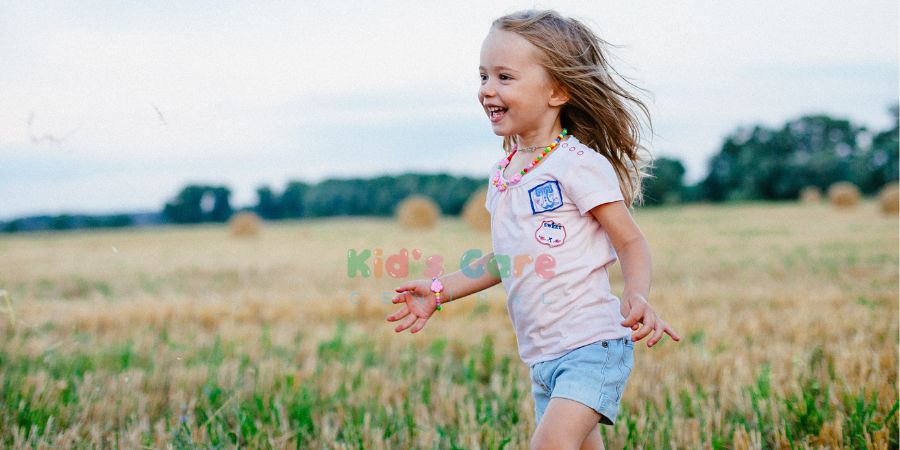The Foundation of Happiness: Building a Strong Relationship
Childhood is a tapestry of emotions, experiences, and lessons. At the core of every happy memory, every triumphant laugh, and every comforting hug, lies the foundation of a strong relationship between the happy child and the parent. Let’s dive deeper into why that is and how we can ensure that this bond only grows stronger.
Why Trust and Understanding Matter
Have you ever wondered why some of our fondest memories from childhood revolve around those moments when we felt understood and trusted? Trust is like an invisible bridge that connects the hearts of parents and children. When your child feels trusted, they’re more likely to open up, share their fears, and listen to your guidance. Understanding, on the other hand, is the gentle nod, the “I get you” that every child craves. It’s not just about hearing words; it’s about feeling the emotions behind them. When a child feels understood, they develop a sense of belonging and security, which is essential for raising a happy child. And guess what? This lays the foundation for happiness.
Daily Rituals to Strengthen Bonds
Alright, let’s get practical now. We all know life gets busy. Between work, household chores, and a dozen other responsibilities, finding moments for bonding to create a happy child can be a challenge. But the good news is, it doesn’t have to be complicated. Here are some simple daily rituals to weave into your routine:
- Morning Hugs: Start the day with a warm hug. It sets a positive tone and reminds your child they’re loved.
- Mealtime Talks: Make it a rule – no gadgets during meals. Use this time to talk, laugh, and share stories.
- Bedtime Stories: Wind down the day with a story. It could be a book, a tale from your childhood, or even a recap of the day.
The idea is to find small pockets of time to connect, laugh, and create memories.
The Power of Quality Time
Now, let’s talk about quality time. We often hear about its importance, but what does it really mean? Think of it this way – it’s not about counting the hours, but making the hours count. Quality time is about being present, both mentally and emotionally. It could be a weekend outing, a simple board game evening, or even cooking together. The activity matters less; the connection matters more. Remember, it’s these shared moments, these pockets of joy and understanding, that fill a happy child’s emotional bank. And when this bank is full, happiness overflows.
Talking with Kids: The Art of Communication
Communication is a beautiful dance, especially when it comes to our little ones. Their minds, ever so curious and evolving, have a unique way of perceiving the world. Engaging in meaningful conversations with them not only helps in understanding their viewpoint but also fortifies the bond of trust and love, contributing to a happy child. Let’s explore this art a bit more.

The Importance of Listening
Listening, true listening, is an act of love. It goes beyond merely hearing words. It’s about tuning into the emotions behind those words, the unsaid feelings that lurk beneath. When we genuinely listen to our happy child, we not only understand their thoughts but also their emotions and needs.
- We Validate Their Feelings: By just being there, silently, attentively, you’re telling them, “Your feelings matter.”
- We Gain Insight: Kids often show us a fresh perspective on things we’ve long taken for granted.
- We Build Trust: When kids see that their voice is heard, they’re more likely to confide in you in the future.
Next time your happy child talks, try to be fully present. Set aside distractions, look into their eyes, and just…listen.
Encouraging Open Conversations
We all want our kids to approach us with anything and everything. But how do we create an environment where they feel comfortable doing so? Here’s how:
- No Judgment Zone: Let your home be a place where kids can express themselves without fear of being judged.
- Ask Open-Ended Questions: Instead of “Did you have a good day?”, try “What was the best part of your day?”
- Share Your Stories: Talk about your day, your feelings, and your experiences. This mutual sharing creates a platform for open dialogue.
Remember, the more open the lines of communication, the richer and more meaningful the conversations with your happy child will be.
How to Talk About Tough Topics
The world isn’t always sunshine and rainbows, and our kids, sooner or later, will have questions about the tougher aspects of life. Navigating these waters can be tricky, but not impossible.
- Stay Calm and Composed: Your child will pick up on your energy. Approach difficult topics with a sense of calm.
- Be Honest, Yet Age-Appropriate: It’s essential to be truthful, but tailor the information to what’s suitable for their age and maturity level.
- Encourage Questions: Allow them to ask questions and answer them patiently. If you don’t know, it’s okay to admit it and discover the answers together.
- Reassure Safety: Often, kids want to know that they’re safe and protected. Offer them that reassurance.
Tough topics, when handled with care and sensitivity, can deepen the trust between you and your happy child.
Setting Boundaries for a Happy Childhood
Boundaries. It’s a word that sometimes brings to mind images of strict rules and limitations. But, when it comes to raising children, boundaries are an essential component of a healthy, happy upbringing. Think of them not as barriers, but as safety nets, guiding our happy child towards better understanding and responsible behavior. Let’s delve into the magic of setting the right boundaries.

Why Boundaries Create Security
Imagine for a moment you’re on a high bridge. Would you feel safer with or without railings? Boundaries act like those railings for our happy child. Here’s why they are essential:
- Predictability: Kids thrive on routine. Knowing what’s expected provides a sense of order in their world.
- Safety: Boundaries, especially in early years, keep kids safe from potential harms they might not yet recognize.
- Preparation for the Real World: The world operates on rules. Learning to respect boundaries at home prepares them for societal norms.
Essentially, when a happy child understands their boundaries, they feel more secure and grounded.
Balancing Freedom and Limits
Setting boundaries doesn’t mean curbing all freedoms. It’s about striking a balance. Here’s how:
- Give Choices Within Boundaries: Instead of saying “No cookies,” try “You can have a cookie after dinner or two cookies tomorrow.”
- Explain the ‘Why’: Help them understand the reason behind a limit. It could be for their safety, health, or moral development.
- Encourage Independence: Allow them the freedom to make choices, but within the safe framework of the boundaries you’ve set.
Remember, it’s not about control, but guiding them to make wise decisions.
Consistency is Key
Ever tried building a house of cards? If one card is out of place, the entire structure can collapse, just like the emotional stability of a happy child. Similarly, when setting boundaries:
- Stay Consistent with Rules: If bedtime is at 8 PM, stick to it. Changing rules often can confuse them.
- Both Parents Should Be on the Same Page: This avoids any “But mom/dad lets me do it!” scenarios.
- Follow Through with Consequences: If a boundary is crossed, ensure that the predetermined consequence is applied. This teaches responsibility and the understanding that actions have repercussions.
Being consistent helps children understand and respect the importance of boundaries.
Setting boundaries for a child might sometimes feel challenging, especially with those puppy eyes looking up at you. But, in the long run, these boundaries mold them into secure, responsible, and understanding individuals. And isn’t that what we all hope for? A future where our kids are not only a happy child but also well-prepared for life’s many adventures.
Teaching Resilience: Helping Kids Bounce Back
Life is a series of ups and downs, much like a roller coaster. And while we might be tempted to shield our children from life’s challenges, what if we could equip them with the tools to handle those challenges head-on? Enter resilience, the beautiful quality of bouncing back stronger, wiser, and more determined, which contributes to a happy child. Let’s explore the art of nurturing resilience in our young ones.

Why Resilience Leads to Happiness
Resilience isn’t just about recovering from setbacks; it’s also intrinsically linked to happiness. Here’s the connection:
- Building Emotional Strength: Resilient kids learn to process and understand their emotions, which in turn helps them handle emotional situations better in the future.
- Problem-Solving Skills: Instead of seeing challenges as insurmountable, they view them as puzzles to solve, boosting their confidence.
- Developing a Positive Outlook: Resilient children tend to see the silver lining, even in difficult situations, fostering a more optimistic and happy disposition.
In essence, resilience is like a muscle. The more it’s exercised, the stronger it becomes, leading to a happier and more well-adjusted happy child.
Building a Growth Mindset
At the heart of resilience lies a growth mindset—the belief that abilities and intelligence can be developed through dedication and hard work. Here’s how to foster this mindset:
- Praise the Process: Instead of just saying “You’re so smart,” try “I love how you approached that problem!”
- Celebrate Mistakes: Teach them that errors are a natural part of learning. It’s not about the mistake, but what’s learned from it.
- Encourage Curiosity: When they ask questions, engage with enthusiasm. If you don’t know the answer, discover it together.
A growth mindset instilled the belief that they can overcome challenges, fostering resilience.
Handling Setbacks with Grace
Every setback is an opportunity in disguise, but only if we know how to navigate it gracefully. To help kids do this:
- Acknowledge Their Feelings: Let them know it’s okay to feel disappointed or upset. Validation is the first step to healing.
- Reframe the Narrative: Turn the “I failed” to “I learned something new.”
- Plan the Next Steps: Instead of dwelling on the setback, discuss what can be done differently next time.
By handling setbacks with grace, children not only learn to overcome challenges but also to view them as stepping stones to success.
Teaching resilience is one of the greatest gifts we can give our children. It’s like handing them a shield and a compass, preparing them for the journey of life. And as they grow, with each hurdle they overcome, they’ll not only bounce back but soar, equipped with the strength, wisdom, and grace that resilience brings.
Cultivating Kindness and Compassion in Kids
In a world bustling with myriad emotions and interactions, kindness and compassion stand out as virtues that can make all the difference. Teaching our children to navigate life with a heart full of empathy not only enriches their own lives but also brings warmth and positivity to those around them, contributing to a happy child. Let’s journey together into the nurturing of these gentle yet powerful traits.

Role Modeling Empathy
They say children are like sponges, soaking up everything around them. One of the most effective ways to instill empathy is to be a living example. Here’s how:
- Show Understanding in Daily Interactions: When someone makes a mistake, instead of reacting with annoyance, demonstrate understanding.
- Express Your Feelings: Openly discuss your emotions with your kids. “I felt sad when…” helps them understand and relate to emotions.
- Active Listening: When your child talks, truly listen. This teaches them the importance of giving attention and understanding to others.
Remember, kids often mirror adult behaviors. By embodying empathy, we create a natural learning environment for them.
Encouraging Acts of Kindness
Kindness can be nurtured through simple, everyday acts. To instill this virtue:
- Create Kindness Jars: Every time your child does a kind act, let them add a marble or a token. Once full, celebrate with a fun family activity.
- Random Acts of Kindness Day: Dedicate one day a week to perform random acts of kindness, like making cards for neighbors or helping with chores.
- Storytelling: Share stories that emphasize kindness, showcasing the beauty of benevolent acts.
Small, consistent acts of kindness can create ripples of positive change, teaching kids the profound impact of their actions.
Celebrating the Joy of Helping Others
There’s an unparalleled joy in lending a hand, a joy that can become addictive in the best way possible. To cultivate this:
- Volunteer Together: Choose local community projects or events where you can volunteer as a family.
- Highlight the Impact: After helping, discuss the difference made. “Did you see how Mrs. Jensen smiled when we raked her leaves?”
- Gratitude Practice: At the end of each day, share one thing you’re grateful for and one way you helped someone. This focuses their attention on positivity and contribution.
When kids experience the joy of helping, it not only boosts their self-worth but also reinforces the value of community and togetherness.
Cultivating kindness and compassion is akin to planting seeds in a garden. With time, patience, and consistent nurturing, these seeds blossom into beautiful flowers, enriching the garden of life. And as our happy child treads the path of life, they’ll leave footprints filled with warmth, understanding, and love, touching countless hearts along the way.
Healthy Habits for a Happy Child
The journey to a joyful childhood isn’t just about the emotional and moral values we instill; it’s equally about the physical and mental habits we nurture. After all, a healthy body and mind are the foundation upon which happiness is built. So, how can we set our children on the path of well-rounded health? Let’s dive in!

The Role of Nutrition and Exercise
The saying “You are what you eat” holds more truth than we sometimes realize. And when paired with regular physical activity, nutrition becomes the cornerstone of health.
- Balanced Meals: Ensure your child gets a mix of proteins, whole grains, fruits, and veggies. Think colorful plates!
- Hydration: Emphasize the importance of drinking water. Maybe get a fun water bottle to make it exciting.
- Active Play: Encourage activities like biking, dancing, or even just a game of catch. These not only boost physical health but also provide a great outlet for energy.
Remember, when kids develop a love for nutritious foods and enjoy the thrill of movement, they’re setting themselves up for a lifetime of health.
Prioritizing Sleep Routines
In our bustling world, sleep sometimes takes a backseat. But for our growing kids, sleep is rejuvenating magic.
- Set Consistent Bedtimes: Even on weekends, try to keep bedtime and wake-up times consistent.
- Create a Wind-Down Ritual: This could include reading a book, soft music, or simple stretches to signal the body it’s time to rest.
- Limit Screen Time Before Bed: The blue light from devices can disrupt sleep. Consider switching devices off at least an hour before bed.
A well-rested child is more attentive, less irritable, and, quite simply, happier!
Mindfulness and Relaxation Techniques for Kids
In a world of stimuli, teaching kids to center themselves can be a game-changer.
- Breathing Exercises: Simple techniques, like taking deep breaths or counting breaths, can calm the mind.
- Mindful Moments: Dedicate a few minutes daily to just sit and observe—maybe the rustling leaves or the sound of the wind.
- Guided Imagery: Use storytelling to guide them through a relaxing scene, like walking on a beach or lying on a cloud.
These techniques not only help in relaxation but also improve focus, attention, and the ability to manage stress.
A healthy child is like a tree with strong roots, ready to face the storms yet flexible enough to dance in the wind. By instilling these habits early on, we gift our children the tools to carve out a life filled with vitality, joy, and equanimity. After all, happiness thrives in a well-tended garden of health and well-being.
Recognizing and Addressing Emotional Challenges
Life, with its ebbs and flows, presents challenges that sometimes touch the tender emotional fabric of our children. As guardians of their well-being, it’s imperative not only to recognize these emotional hurdles but also to provide the guidance and support they need to traverse them. Let’s delve into the nuances of understanding and addressing the emotional challenges our young ones might face.

Common Emotional Challenges in Children
Children, much like us, experience a spectrum of emotions. Some common challenges they might grapple with include:
- Anxiety: This could manifest as social anxiety, separation anxiety, or even anxiety about schoolwork.
- Low Self-esteem: Feeling like they’re not ‘good enough’ compared to peers or siblings.
- Mood Swings: Rapid changes in mood, which could be due to hormonal changes or external factors.
- Grief: Coping with the loss of a loved one, be it a family member, friend, or even a pet.
Recognizing these challenges is the first step. Being observant and creating an environment where they feel safe expressing themselves can make all the difference.
Seeking Professional Help When Needed
While our love and support play a pivotal role, there are times when professional intervention becomes essential.
- Trust Your Instincts: As a parent, if you feel something’s amiss, it probably is.
- Open Dialogue: If teachers or caregivers voice concerns, take them seriously and consider a professional opinion.
- Find the Right Professional: This could be a child psychologist, therapist, or counselor. Their expertise can provide strategies and tools tailored to your child’s needs.
Seeking help is not a sign of weakness but a testament to the depth of your care and commitment.
Supporting Your Child Through Tough Times
Our role as anchors during their emotional storms is crucial. Here’s how to be their rock:
- Active Listening: Sometimes, all they need is a listening ear, free from judgment or interruption.
- Validate Their Feelings: Statements like “It’s okay to feel this way” can offer immense comfort.
- Offer Stability: Maintaining routines and consistency can provide a sense of normalcy during turbulent times.
Through these trials, your unwavering support will teach them resilience and the power of love.
Conclusion
Navigating the vast sea of childhood emotions to ensure a happy child is no small feat. Each wave, each ripple, brings with it unique challenges and learnings. By recognizing the emotional hurdles our children face, seeking help when needed, and offering unwavering support, we lay the groundwork for emotional well-being and resilience. As parents, our love, patience, and understanding are the guiding lights in their journey, illuminating the path to happiness and equanimity. Here’s to raising strong, emotionally-aware children ready to embrace the world with open hearts.


I have been surfing on-line greater than 3 hours lately, but I by no means discovered any interesting article like
yours. It is lovely value sufficient for me. In my view, if all website owners and bloggers made good content as you probably did, the net shall be
much more helpful than ever before.